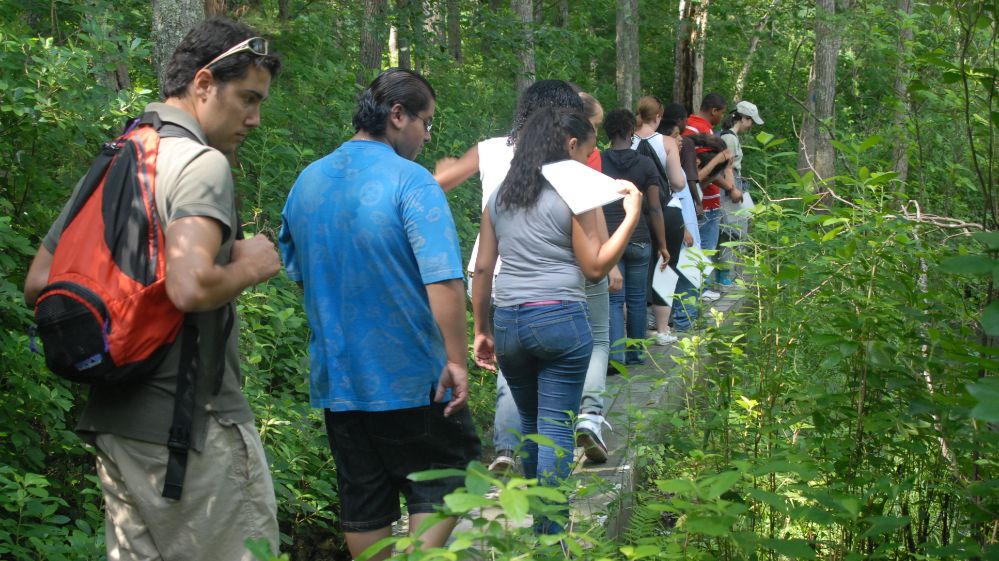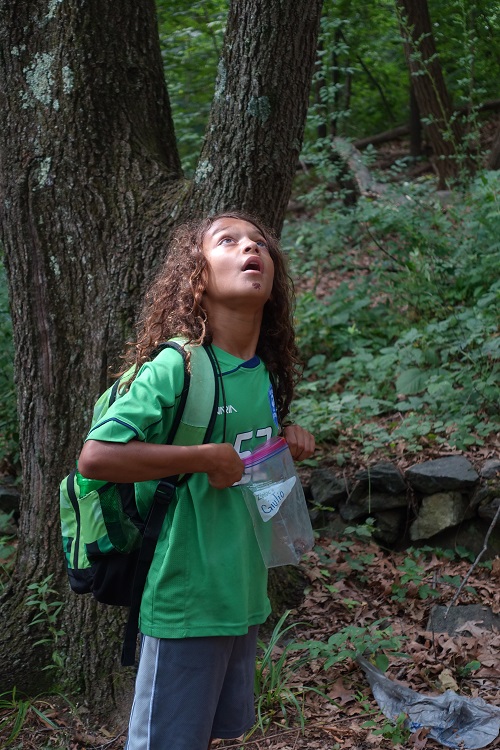
June 4, 2019
Squirrels and Snails and Cool, Quiet Trails
Audubon Education Introduces Kids to the Forest

Learning about forests is important for all ages, so the key role that forests play in a healthy environment is a frequent talking point in many of Audubon’s educational programs. Those messages are conveyed in classroom programs, nature walks, summer camps and informal conversations throughout the year.
“The great thing is that trees are something fascinating to a child – trees are bigger and older than them – so it’s a beautiful entry point into talking about forests,” said Lisa Maloney, Audubon’s urban education coordinator. “Individual trees have such a good story to tell because so many interesting things happen to each one of them, even street trees, making them the perfect way to talk about the big picture of how important forests are.”
In many youth programs, Maloney and Audubon’s other environmental educators use forests as an example of the interconnectedness of everything that lives in an ecosystem. It allows them to discuss the food web and how forests function. But they also use forests in activities designed to provide a unique sensory experience.
“You can sense the difference when you walk into a forest – it’s cooler, it’s quieter,” Maloney said. “We have the kids shut their eyes and count the sounds. Or we do a scratch and sniff activity because forests have so many good smells – pine and birch and sassafras. The sensory experience can be really peaceful and give us a moment to take a deep breath and take it in.
Urban children who have little experience in a large forest are sometimes conflicted on their first foray into a wooded refuge. Some are initially frightened because it can be a dark place harboring unfamiliar sights and sounds. But Audubon’s educators ease them into the environment, and the children come out with a newfound sense of wonder and enthusiasm.

After adult-oriented programs, participants often share that they, too, learned lessons about forests that they didn’t previously know, like how particular trees are pollinated or their use by Native Americans or how soils fit into the big picture of forest health and conservation. And sometimes adults go home simply appreciating the mental health benefits that forests can provide.
“When you’re standing in a forest and see the trees swaying, it makes you feel small,” Maloney said. “It makes you realize that even though your life is pressure-packed and you have all these worries, if you can see how these large trees have survived so much longer than you, it can help you get a perspective on your own life that hopefully brings you a moment of peace.”

















